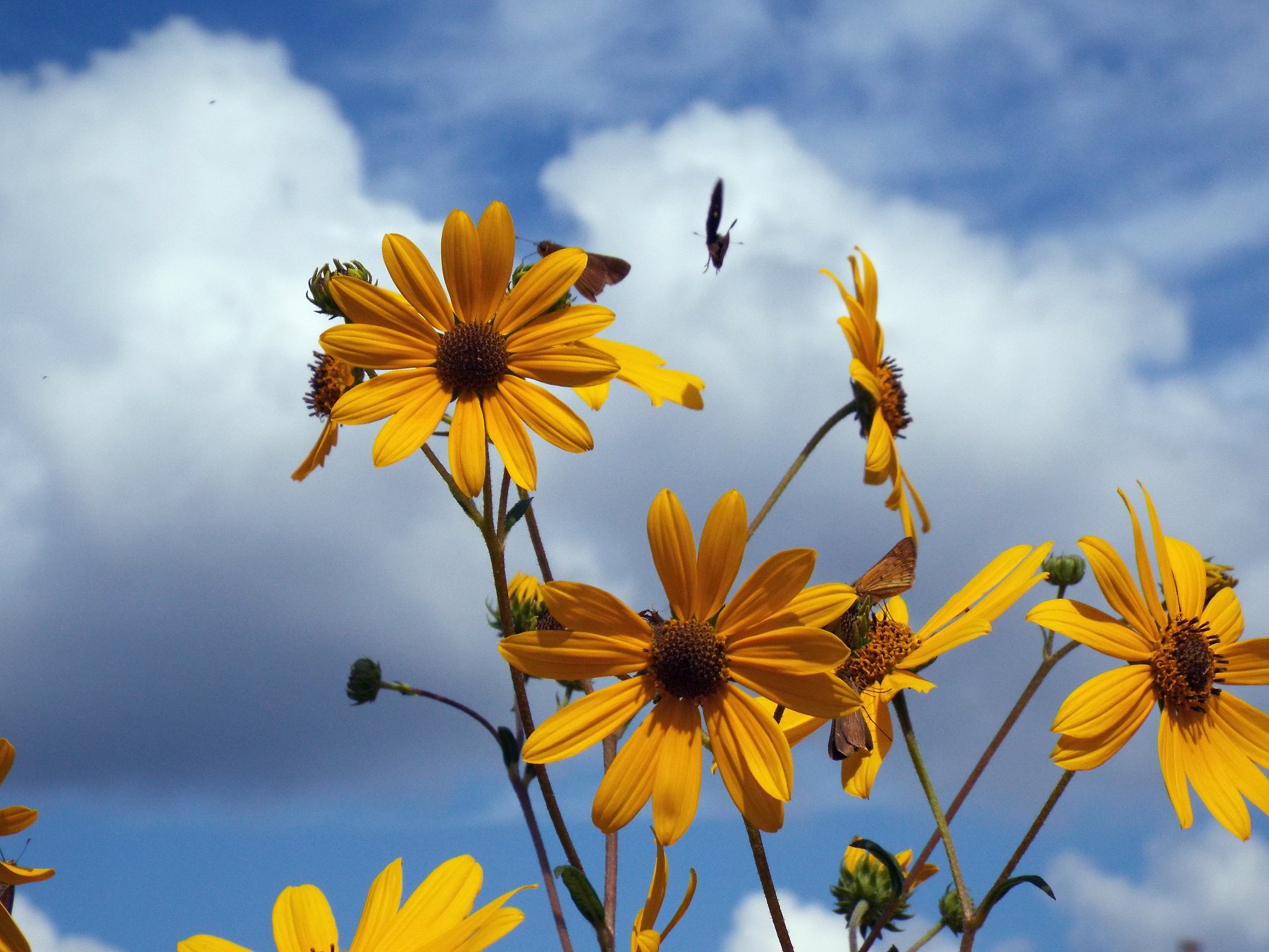
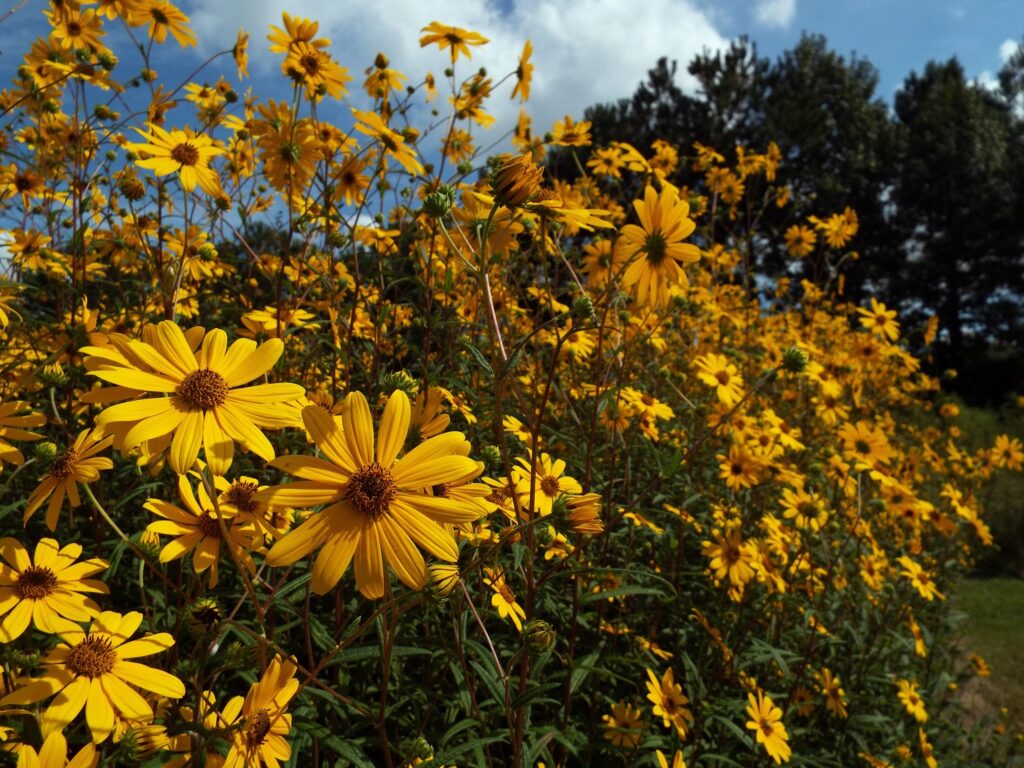
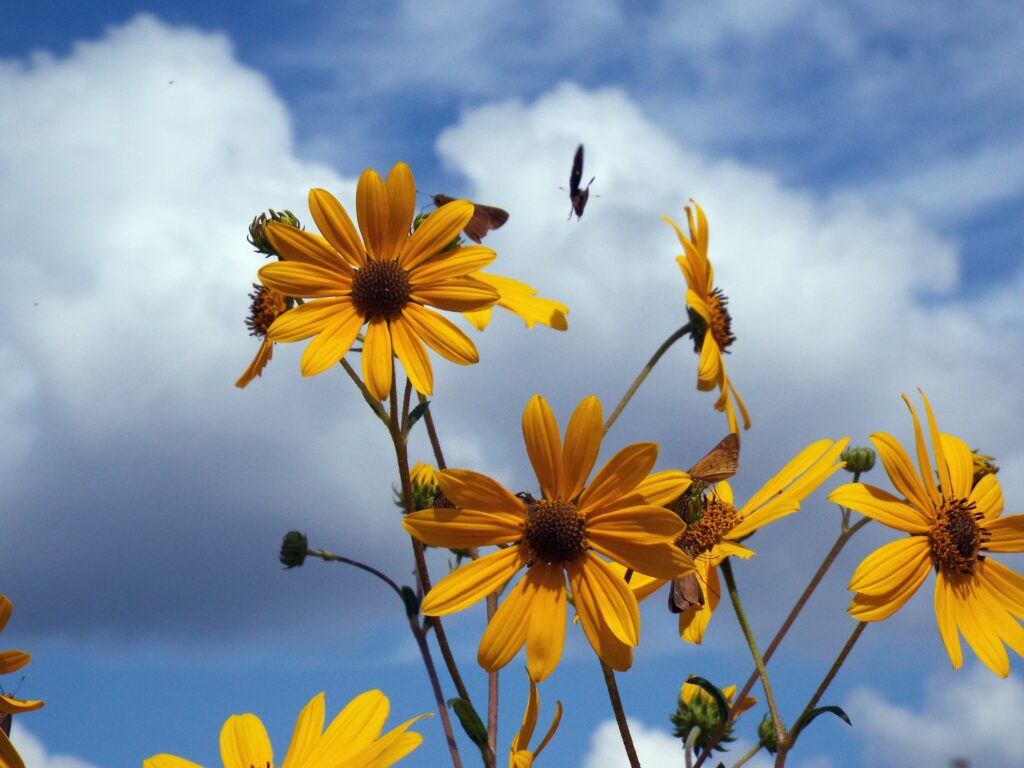
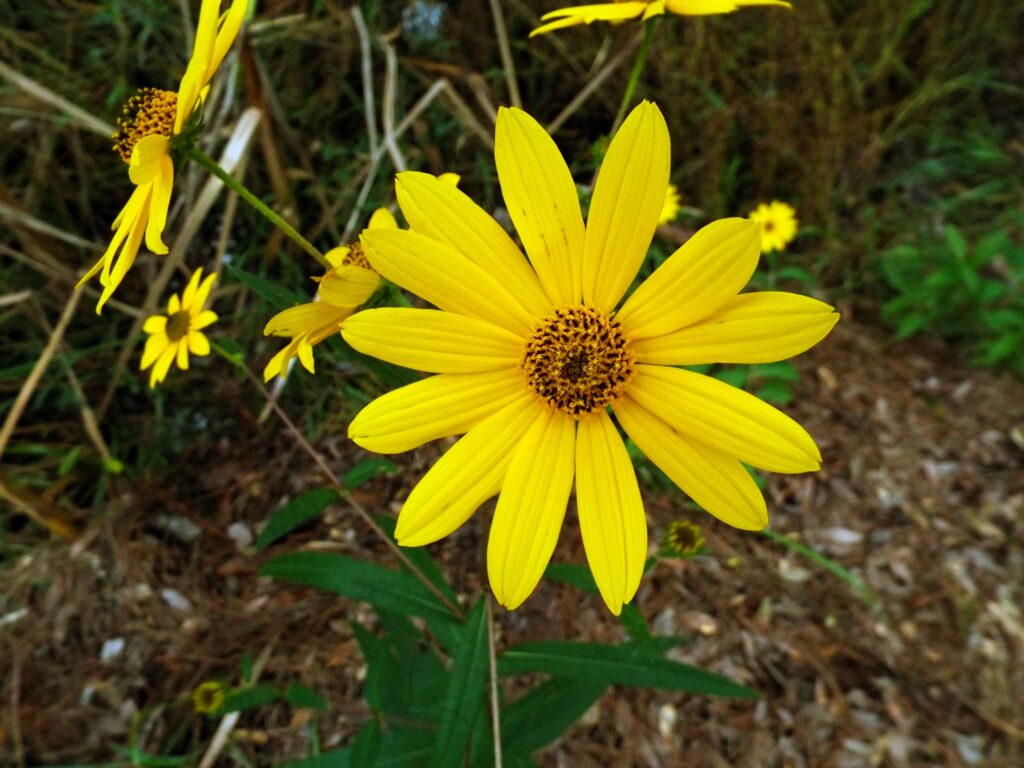
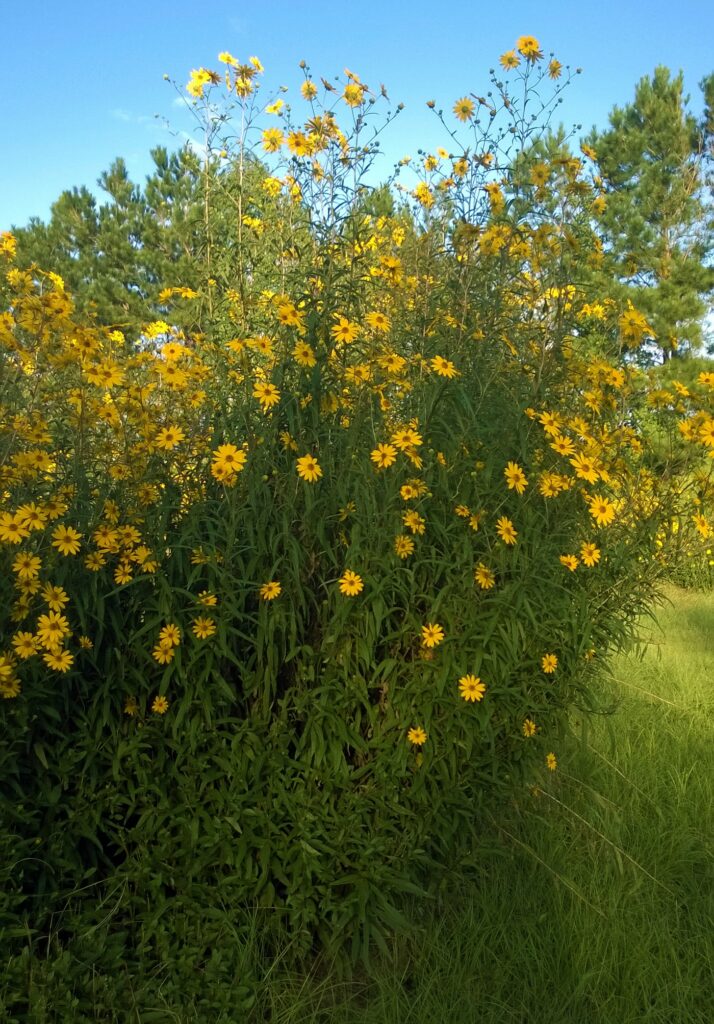
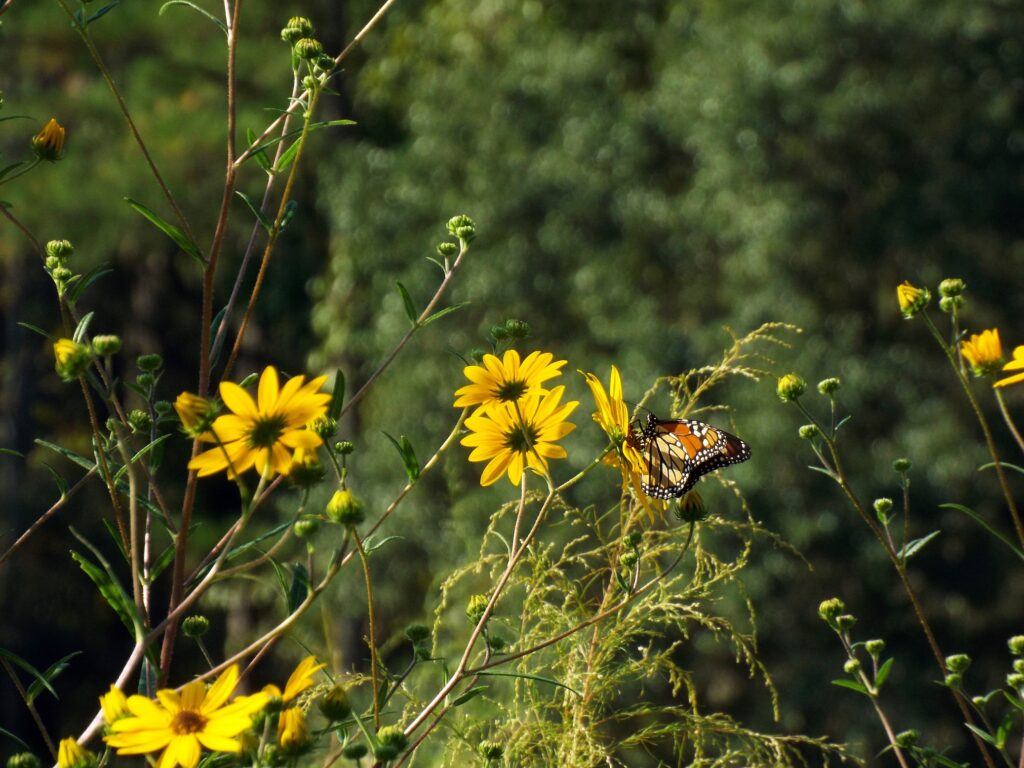
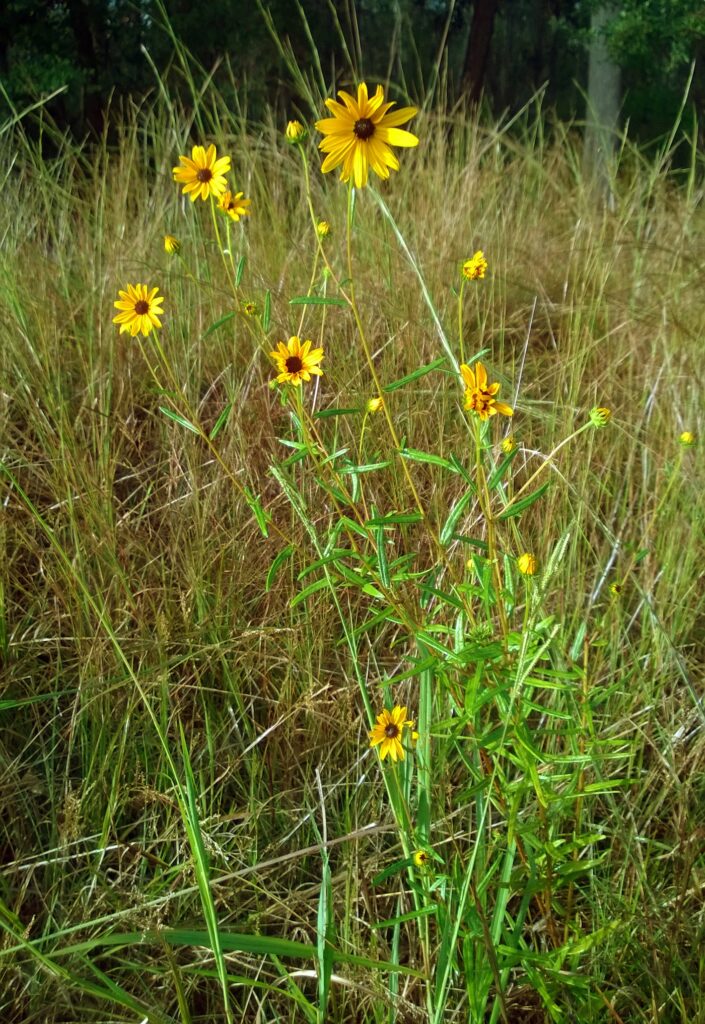
This week for Flora and Fauna Friday we’re examining a roadside flower that’s in full bloom this time of year. You’ve probably seen it all along HWY-174 these last few weeks. Today we’re putting the spotlight on the Swamp Sunflower (Helianthus angustifolius).
The Swamp Sunflower is a common fall flower on Edisto. Its common name comes from its love of wet, sunny habitat. With their moist soil and regular but widely spaced mowing schedule, ditches in rural roadsides are a preferred habitat for Swamp Sunflowers. It’s a plant that can be quite variable in appearance. Plants in shadier areas or those that are cut backed more frequently, may not even reach two feet in height. Where ornamental plantings in ideal conditions can reach 10 feet in height. Swamp Sunflower gets its scientific name, Helianthus angustifolius, from its narrow leaves and large, bright yellow flower. Helianthus angustifolius directly translates to Narrow-leaved Sun-flower (which is another common name for the species). The most easily recognized feature of this plant are those large, vibrant yellow flowers that bloom high off the ground. The flowers look much like a Black-eyed Susan or Coreopsis but the flattened, black disc in the center distinguishes it as a Sunflower. These flowers are a big pollinator attractor, especially for butterflies. Their seeds are also a source of food for Goldfinches and Sparrows. Swamp Sunflowers are perennial but they die back to the ground each winter. From the first frost until spring, Swamp Sunflowers are only visible by last year’s flower stalk and what’s known as a basal rosette. A basal Rosette is simply a whorl of leaves laying directly on top of the soil. This is a common adaptation many perennial wildflowers deploy. It allows the plant to continue to photosynthesize a small amount throughout the winter while keeping the leaves out of the cold, dry winds and within the warm layer of air right above the surface of the soil. From mid-spring, they grow slowly through to the end of summer before finally putting out a foot or more of flower stalk around the beginning of fall. They bloom for about a month, usually late September until Halloween. Sunflowers have a behavior know as heliotropism. This is the act of a plant or animal moving or orienting itself in response to sunlight. In Sunflowers, they orient their leaves and flowers to face the sun, slowly moving throughout the day so that the plant is always facing the sun. Plants do this by altering the internal pressure of their cells, causing uneven pressure in the leaf or flower stalk and bending the plant towards or away from sunlight. In Sunflowers, the plants face towards the sunlight. This is called diaheliotropism. It allows the plant to maximize its photosynthetic potential by catching as much sunlight as possible. Sicklepod, a plant I talked about back in August, is also heliotropic but in a different way. Sicklepod, and many other species of plants, orient their leaves edge on with the sun. This is called paraheliotropism. They minimize the amount of sunlight that contacts their leaves to avoid overheating. Plants typically only do this during the hottest part of the day, where the surface of the leaf can reach dangerous high temperatures when there is no breeze or the soil is dry.